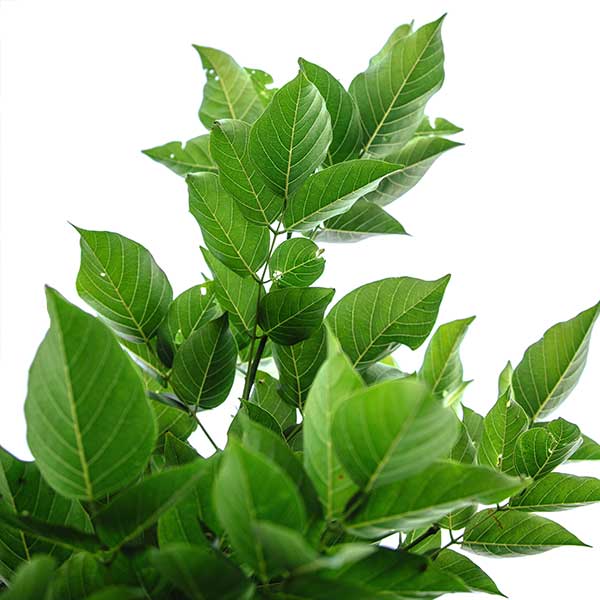
The History of Leaf Tea
Les CalvertThe History of Leaf Tea
Tea, one of the world's most popular beverages, has a rich and fascinating history that spans thousands of years and numerous cultures. From its origins in ancient China to its global spread and the diverse traditions that have developed around it, tea has played a significant role in shaping societies and economies worldwide.
Origins in Ancient China
The history of tea begins in China, where legend holds that Emperor Shen Nong discovered the drink around 2737 BCE. According to the tale, while boiling water in his garden, a few leaves from a nearby tea tree fell into the pot. Intrigued by the pleasant aroma, the emperor tasted the brew and found it both refreshing and invigorating. This accidental discovery marked the beginning of tea's journey through history.
Initially, tea was used primarily for medicinal purposes. Early Chinese texts, such as the "Shennong Ben Cao Jing," describe tea as a remedy for various ailments, including fatigue, digestive issues, and headaches. By the Tang Dynasty (618–907 CE), tea had evolved from a medicinal herb into a daily beverage, and its consumption became a refined art form. The Chinese aristocracy and Buddhist monks were particularly fond of tea, and it was during this period that tea culture began to flourish, with elaborate tea ceremonies and the development of different tea types and preparation methods.
The Spread of Tea Across Asia
Tea's popularity in China soon spread to neighboring countries. In the 6th century, Buddhist monks brought tea to Japan, where it became an integral part of Japanese culture. The Japanese developed their own tea traditions, most notably the "chanoyu" or Japanese tea ceremony, which emphasized the aesthetics and spiritual aspects of tea preparation and consumption. Tea cultivation in Japan began in earnest during the Kamakura period (1185–1333), leading to the development of unique Japanese teas such as matcha and sencha.
Tea also made its way to Korea, where it was initially introduced by Chinese Buddhist monks. Over time, tea drinking became popular among the Korean aristocracy and the general populace, leading to the creation of distinct Korean tea customs.
Tea in the Arab World and Europe
Tea's journey from Asia to the rest of the world began along the ancient Silk Road, the trade routes that connected China with the Middle East and Europe. By the 9th century, tea had reached the Arab world, where it was traded along with other valuable commodities such as silk and spices. However, it was not until the 16th century that tea made its way to Europe, thanks to the Portuguese and Dutch traders.
The Dutch East India Company played a significant role in introducing tea to Europe. By the early 17th century, tea had become a fashionable drink among the European elite, particularly in the Netherlands and Britain. Initially, tea was an expensive luxury, reserved for the wealthy, but as trade routes expanded and tea became more accessible, its popularity spread to all levels of society.
In Britain, tea became deeply ingrained in the culture. The British East India Company, which held a monopoly on tea imports, played a crucial role in making tea a staple of British life. The tradition of afternoon tea, popularized in the 19th century, became a beloved social ritual, with tea served alongside sandwiches, scones, and pastries.
The Role of Tea in Global Trade and Conflict
As tea became increasingly popular, it also became a significant driver of global trade and, at times, conflict. The British desire for Chinese tea led to a massive trade imbalance, which the British attempted to correct by exporting opium to China. This trade practice eventually led to the Opium Wars in the mid-19th century, which resulted in the opening of Chinese ports to foreign trade and the eventual decline of the Qing Dynasty.
To reduce their reliance on Chinese tea, the British began cultivating tea in their colonies, particularly in India and Sri Lanka (then Ceylon). The establishment of tea plantations in Assam, Darjeeling, and other regions transformed these areas into major tea-producing regions, with Indian tea becoming a staple of British tea culture.
Modern Tea Culture
Today, tea is enjoyed in countless forms and varieties around the world. From the intricate tea ceremonies of Japan and China to the casual tea breaks in Britain and the Middle East, tea has become a universal symbol of hospitality, relaxation, and social connection.
In recent years, the global tea industry has seen significant growth, with an increasing emphasis on specialty teas, organic farming, and sustainable practices. Whether it's a simple cup of green tea, a robust black tea, or a fragrant herbal blend, tea continues to be a beloved beverage that brings people together across cultures and continents.
Conclusion
The history of tea is a rich tapestry woven with cultural exchange, trade, and tradition. From its mythical origins in ancient China to its role in shaping global trade, tea has left an indelible mark on human history. As we sip our tea today, we are partaking in a tradition that has been cherished for millennia, a testament to the enduring appeal of this remarkable beverage.

